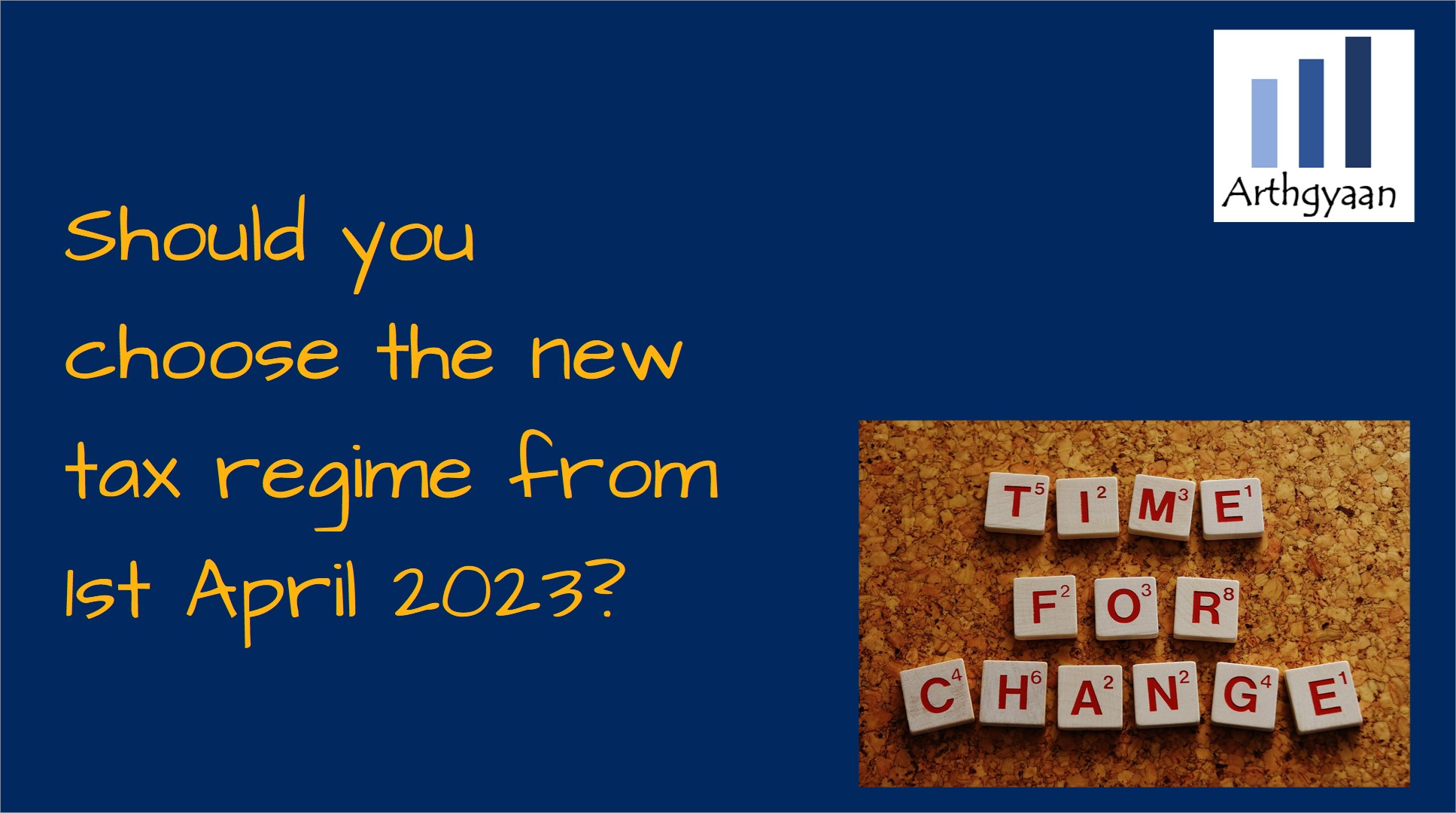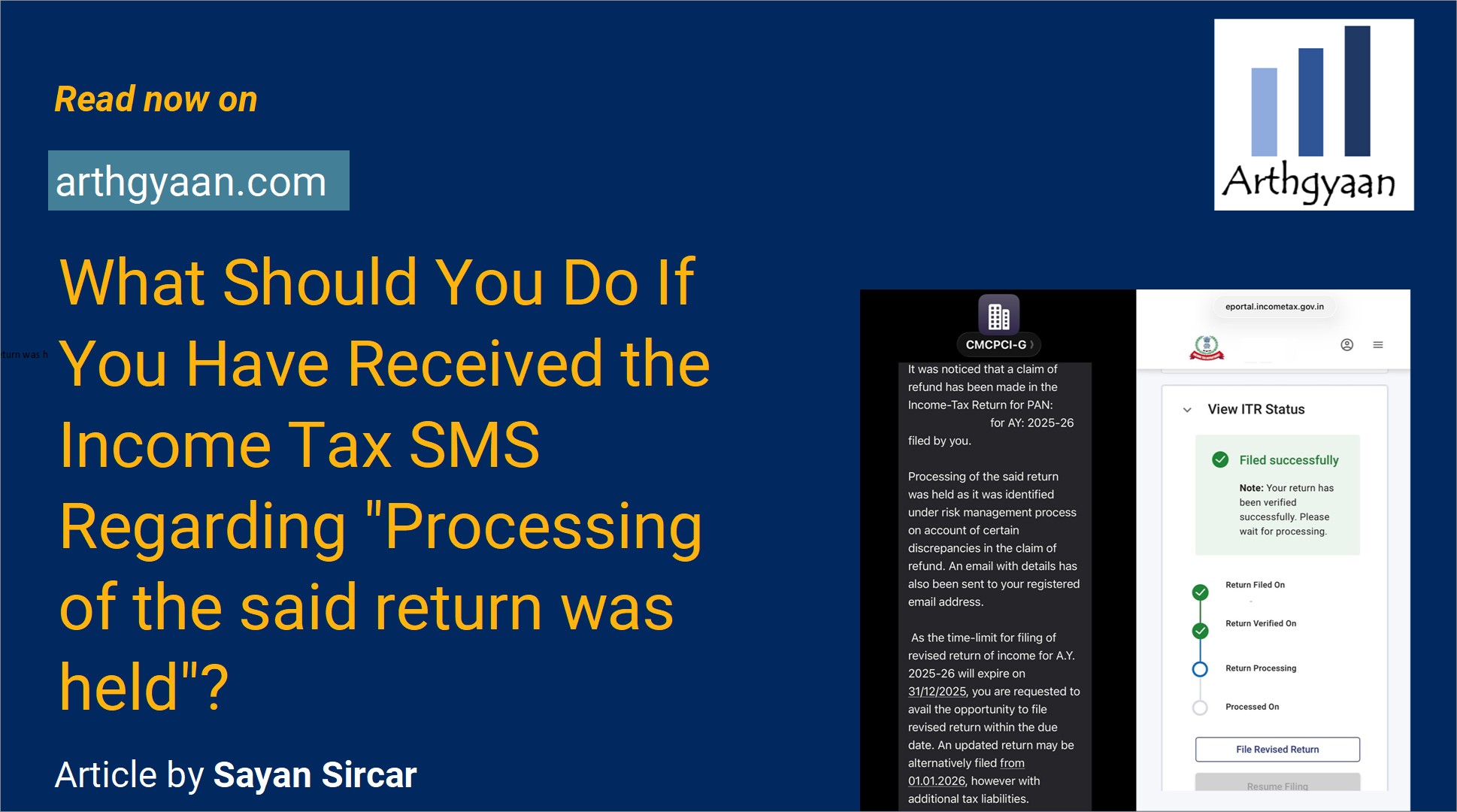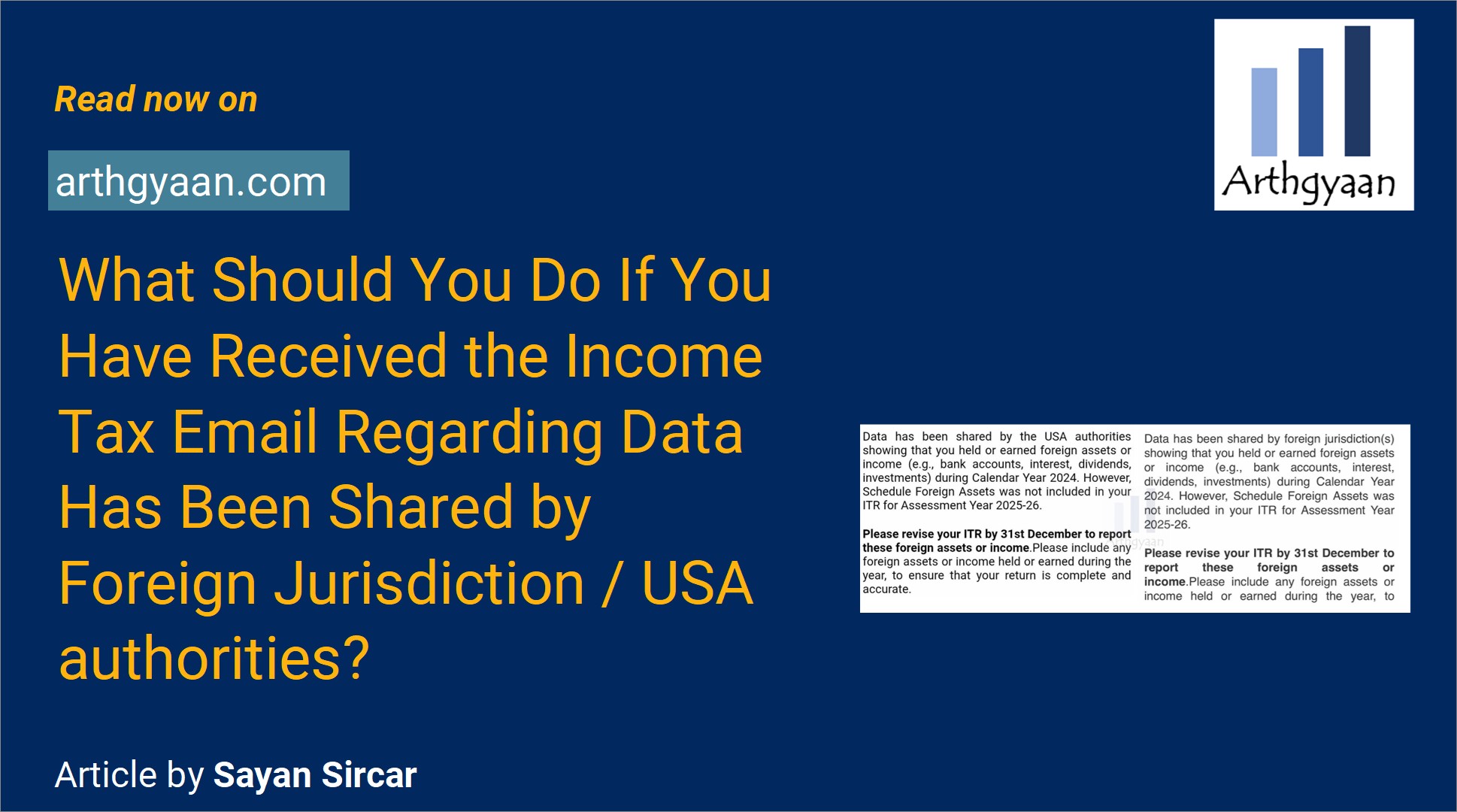Should you choose the new tax regime from 1st April 2023?
This article describes how to use the Arthgyaan goal-based investing tool as a calculator to determine if switching to the New Tax Regime makes sense.
This article describes how to use the Arthgyaan goal-based investing tool as a calculator to determine if switching to the New Tax Regime makes sense.

Budget 2020 introduced the New Tax Regime (NTR) with the premise of lower overall taxes on income as long as tax deductions like 80C, 80D, HRA etc., are foregone by the investor. In contrast, the Old Tax Regime (OTR) allows all of these deductions but with a higher tax on the post-deduction income. As per Budget 2023,
Old tax Regime slabs for post-deduction income are:
New tax Regime slabs for post-deduction income are:
Given how these slabs are structured, there is a break-even point based on the total amount of deductions you usually take so that one of the tax regimes leads to lower taxes. Now that NTR is the default option, it is essential to correctly choose the tax regime, as many companies will open up the choice in April.
An individual salaried taxpayer can switch between the old and new tax regimes once a year without restrictions. If you have yet to specify the regime to your employer, then the new tax regime will be used by default. You must also file your ITR on time if you wish to use the old tax regime.
Taxpayers can also declare one tax regime (old or new) to their employer and then switch to the other one when filing.
This article helps you decide, based on your tax planning and the deductions you wish to take, which regime will be beneficial for you this financial year, i.e. FY2023-24, which starts on 1st April 2023. However, you should remember that if you declare the wrong tax regime and later add/remove deductions, more tax will get deducted. Therefore, you will have to ask for a refund when filing.
There are other financial tasks due in April. Here is a list: How should you plan your investments and taxes in April?.
As per Budget 2023, new tax regime is the default unless the tax-payer chooses the old regime.
You can switch between old and new and back anytime during tax-filing by 31st July. If you miss the 31st July deadline, you cannot switch regimes and have to choose the new regime.
These tax filers who must use ITR 4, have to fill Form 10-IEA to choose the old tax regime before 31st July. Otherwise, the new regimes will apply.
If you have income from business or profession, you cannot switch regimes every year.
We use the Arthgyaan Goal-based investing calculator to formulate the investment model with all the above assumptions and goals. There is a link to download a pre-filled copy of the Google sheet via the button below.
Important: You must be logged into your Google Account on a laptop/desktop (and not on a phone) to access the sheet.
Once you get your sheet, you can access video tutorials in the howto tab.
As in all the cases above, the differentiating factor is the quantum of deductions. As long as the amount of deductions from 80C, 80D, home loan, HRA etc., exceeds ₹3.75 lakhs (we will ignore the ₹50,000 standard deduction since that is the same for both regimes), the old tax regime is better.
The old tax regime, therefore, makes sense only if you have substantial valid investments via 80C, pay a good amount of medical insurance premium under 80D and have either a home loan or receive HRA.
The new tax regime makes sense
If you are still determining your deductions, you can play around with your options in the calculator to see what works best for you.

Published: 23 December 2025
6 MIN READ

Published: 18 December 2025
8 MIN READ
1. Email me with any questions.
2. Use our goal-based investing template to prepare a financial plan for yourself.Don't forget to share this article on WhatsApp or Twitter or post this to Facebook.
Discuss this post with us via Facebook or get regular bite-sized updates on Twitter.
More posts...Disclaimer: Content on this site is for educational purpose only and is not financial advice. Nothing on this site should be construed as an offer or recommendation to buy/sell any financial product or service. Please consult a registered investment advisor before making any investments.
This post titled Should you choose the new tax regime from 1st April 2023? first appeared on 01 Apr 2023 at https://arthgyaan.com
Copyright © 2021-2025 Arthgyaan.com. All rights reserved.